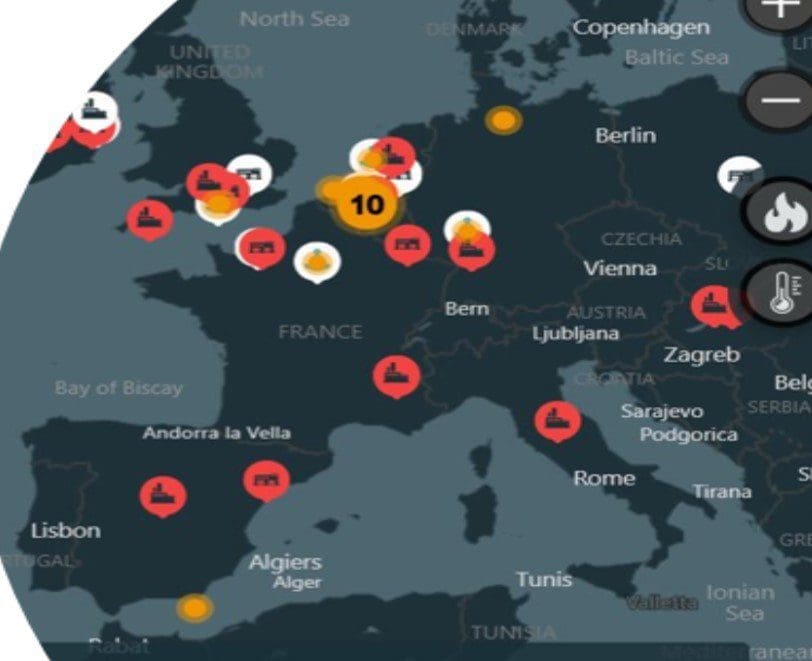 Over the last two decades, there has been a significant focus on increasing the speed of supply chain planning solutions. Technology advancements in hardware, cloud, and in-memory computing fueled this increase, followed by the boost from automation, machine learning, and AI. Additionally, software vendors continuously invest in tuning the performance of their algorithms and models.
Over the last two decades, there has been a significant focus on increasing the speed of supply chain planning solutions. Technology advancements in hardware, cloud, and in-memory computing fueled this increase, followed by the boost from automation, machine learning, and AI. Additionally, software vendors continuously invest in tuning the performance of their algorithms and models.
However, you may have noticed that the increase in the speed of supply chain planning solutions is not resulting in better decisions, improved performance, or much-needed supply chain agility. Instead, your planning team continues to be overworked and stressed. There is limited value to running an outdated process faster, and that value drops considerably when significant portions of the process run outside the enterprise tools. For example, running a batch process that now takes 8 hours instead of 12 does not translate into supply chain agility.
Supply chain leaders considering new supply chain planning solutions or upgrades must consider several aspects beyond speed when making investment decisions. Here are the top 4 capabilities to look for:
- A better approach to scenario planning
- Productized and explainable artificial intelligence (AI) and machine learning (ML)
- Enhanced planner experience
- End-to-end supply chain planning capabilities
A Better Approach to Scenario Planning
Scenario planning has always been a valuable tool in supply chain planning, and with the continuous rise in volatility and uncertainty, it has become critical. Scenario planning relies on the planner to identify, manually create, run, evaluate multiple scenarios to understand the trade-offs, and execute an action plan. Planners spend considerable time preparing scenario planning and not the actual analysis. Scenario plans are either too granular to offer useful insight or too wide to be effective, and the complexity increases non-linearly with the number of variables. Executing the scenario fast provides diminishing returns when non-value-added tasks take up most of the planner’s day.

For impactful scenario planning, planners must spend time on analysis rather than collating data and manually creating scenarios. When evaluating new solutions, look for tools that provide intelligent automation of activities like manually creating individual scenarios and eliminating the need to run individual scenarios sequentially. Look for capabilities that simulate a range of values for multiple variables and provide recommended scenarios based on performance against business objectives.
Productized and Explainable AI and ML
Artificial intelligence and machine learning are integral capabilities for supply chain planning. However, as in the recent case of ChatGPT incorrectly counting the number of r’s in strawberry, AI is not a panacea. Supply chain leaders must be mindful when deploying AI and not get swayed by small proofs of concept working on limited data.
When evaluating new solutions, look for scalability – can the models perform when deployed in global operations with millions of SKUs moving through complex global supply chain networks? Assess for security – can the new solutions withstand increasing cyberattacks on supply chains and continue to perform correctly? Look for explainability – can the planning solution show your planners which factors were included and the effects? Without explainability, planners and decision-makers will have difficulty trusting the AI recommendations. The lack of trust will hamper adoption and may never lead to the level of automation that AI promised. Look for solutions that provide productized AI and ML built into the product through a rigorous development process and testing, including performance, scalability, and security.
Enhanced Planner Experience
Supply chain planners are under immense pressure at work, not only do they need to navigate existing complex business environments, but they are also inundated with daily market events and disruptions that require immediate resolution. Supply chain management talent continues to be in short supply and attrition due to burn out is still high. Several factors impact the day in the life of a planner; however, one controllable factor is the amount of time spent outside the enterprise planning tool performing planning-related tasks. Planners resort to exporting plans and data to spreadsheets and BI applications for plan analysis, editing plans for downstream use, comparison, and performance analysis. Working outside the enterprise solution is time-consuming and adds several non-value-adding tasks to the planner’s day.
When evaluating new solutions, look for comprehensive inline or embedded analytics within the planning solution. Can the planning tool support analysis of the plan’s performance and variance while assessing different contingency plans to drive business outcomes? Can the solution natively support the creation of plans at varying aggregation levels and provide multiple views to support the requirements of downstream teams and enable them to move fast? Lastly, rigorously evaluate the generative AI solution for domain-specific understanding, source attribution, and enterprise security.

End-to-End Supply Chain Planning Capabilities
Supply chain planning impacts performance from the board room to the factory shop floor. The traditional siloed and sequential planning approach can no longer handle the complexity, volatility, and scale of modern supply chains. Building supply chain resilience means moving away from fragmented planning driven by mixed tools and systems and prioritizing local optimization over overall performance. A resilient supply chain requires interoperable solutions that provide end-to-end visibility and collaborative planning from IBP to factory planning.
When evaluating new solutions, look for a unified data model that combines all the supply chain planning and manages real-time event data internally and externally. Assess solutions on interoperability and not just integration – can different stakeholders across functions and regions work without friction on decision workflows? Lastly, look beyond planning for a comprehensive set of offerings that optimize the management of your complete supply chain.
Supply chain planning leaders and teams continue to deliver performance for their companies through once-in-a-lifetime events and disruptions. However, the continuous stress leads to burnout, and the general supply chain management talent shortage means you cannot just add more planners to fix the issues. Rethinking the process is an important first step, which needs to be supported by deploying technology to realize the process changes. New supply chain planning solutions must provide intelligent automation, a strong AI and ML backbone, end-to-end supply chain planning capabilities, and positively influence the planner experience by reducing tedium.
Running a flawed process faster only gets you so far. To understand the holistic capabilities to look for in a supply chain planning solution, download our eBook and assessment checklist.
BIO
Robin Bhatnagar is a seasoned supply chain and technology professional with over 14 years of experience in product marketing, field marketing, pre-sales, and consulting. As a Product Marketing Director at Blue Yonder, Robin specializes in Supply Chain Planning for Discrete Manufacturing industries. Before joining Blue Yonder, Robin held several leadership positions at Bristlecone (A Mahindra Group Company), including Head of Product Marketing, pre-sales for AI & Advanced Analytics solutions, and managing strategic product partnerships.
















 Terence Leung is Senior Director, Solutions Marketing at Blue Yonder. He has a keen interest in digitalization and the value it generates throughout the supply chain. In this role, he leads his organization to drive thought leadership and go-to-market strategy for supply chain execution and logistics solutions. In addition, he works with customers to understand requirements and drive best practices.
Terence Leung is Senior Director, Solutions Marketing at Blue Yonder. He has a keen interest in digitalization and the value it generates throughout the supply chain. In this role, he leads his organization to drive thought leadership and go-to-market strategy for supply chain execution and logistics solutions. In addition, he works with customers to understand requirements and drive best practices.



